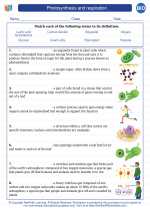Photosynthesis
Photosynthesis is the process by which green plants, algae, and some bacteria convert light energy, carbon dioxide, and water into glucose and oxygen. This process takes place in the chloroplasts of plant cells and involves two main stages: the light-dependent reactions and the light-independent reactions (Calvin cycle).
Light-Dependent Reactions:
- Light energy is absorbed by chlorophyll and other pigments in the thylakoid membranes of the chloroplasts.
- This energy is used to split water molecules into oxygen, protons, and electrons. The oxygen is released as a byproduct.
- The electrons are transferred through a series of proteins, creating a flow of hydrogen ions across the thylakoid membrane.
- This flow of hydrogen ions drives the production of ATP and NADPH, which are used to power the light-independent reactions.
Light-Independent Reactions (Calvin Cycle):
- The ATP and NADPH produced in the light-dependent reactions are used to convert carbon dioxide into glucose in a series of enzyme-catalyzed reactions.
- This process also regenerates the molecule that captures carbon dioxide, allowing the cycle to continue.
Respiration
Cellular respiration is the process by which cells break down glucose and other organic molecules to produce ATP, the primary energy currency of cells. This process occurs in the mitochondria of eukaryotic cells and involves three main stages: glycolysis, the citric acid cycle, and oxidative phosphorylation.
Glycolysis:
- Glucose is broken down into two molecules of pyruvate in the cytoplasm of the cell, producing a small amount of ATP and NADH.
Citric Acid Cycle:
- Pyruvate is transported into the mitochondria and converted into acetyl CoA, which enters the citric acid cycle.
- During the citric acid cycle, acetyl CoA is further broken down, releasing more ATP, NADH, and FADH2.
Oxidative Phosphorylation:
- The high-energy electrons carried by NADH and FADH2 are used to generate a large amount of ATP through a series of protein complexes in the inner mitochondrial membrane.
- Oxygen acts as the final electron acceptor, forming water as a byproduct.
Study Guide
When studying photosynthesis and respiration, it's important to understand the key concepts, processes, and the interrelationship between the two. Here are some key points to focus on:
- Understand the overall chemical equations for photosynthesis and respiration, including the reactants and products involved.
- Learn the specific reactions and enzymes involved in each stage of photosynthesis and respiration, and the locations within the cell where these processes occur.
- Be able to explain the role of ATP, NADPH, NADH, and FADH2 in energy production and transfer during these processes.
- Understand the relationship between the light-dependent and light-independent reactions in photosynthesis, as well as the interconnected nature of glycolysis, the citric acid cycle, and oxidative phosphorylation in respiration.
- Be able to compare and contrast the inputs, outputs, and overall purposes of photosynthesis and respiration in maintaining the energy balance of living organisms.
[Photosynthesis And Respiration] Related Worksheets and Study Guides:
.◂Biology Worksheets and Study Guides High School. Photosynthesis and respiration
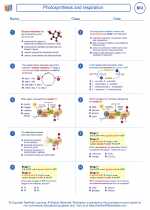
 Worksheet/Answer key
Worksheet/Answer key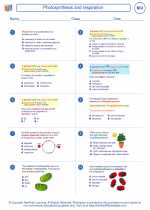
 Worksheet/Answer key
Worksheet/Answer key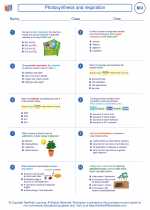
 Worksheet/Answer key
Worksheet/Answer key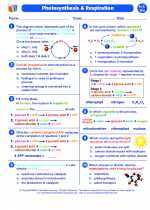
 Vocabulary/Answer key
Vocabulary/Answer key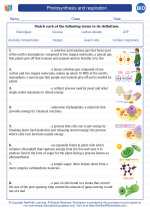
 Vocabulary/Answer key
Vocabulary/Answer key